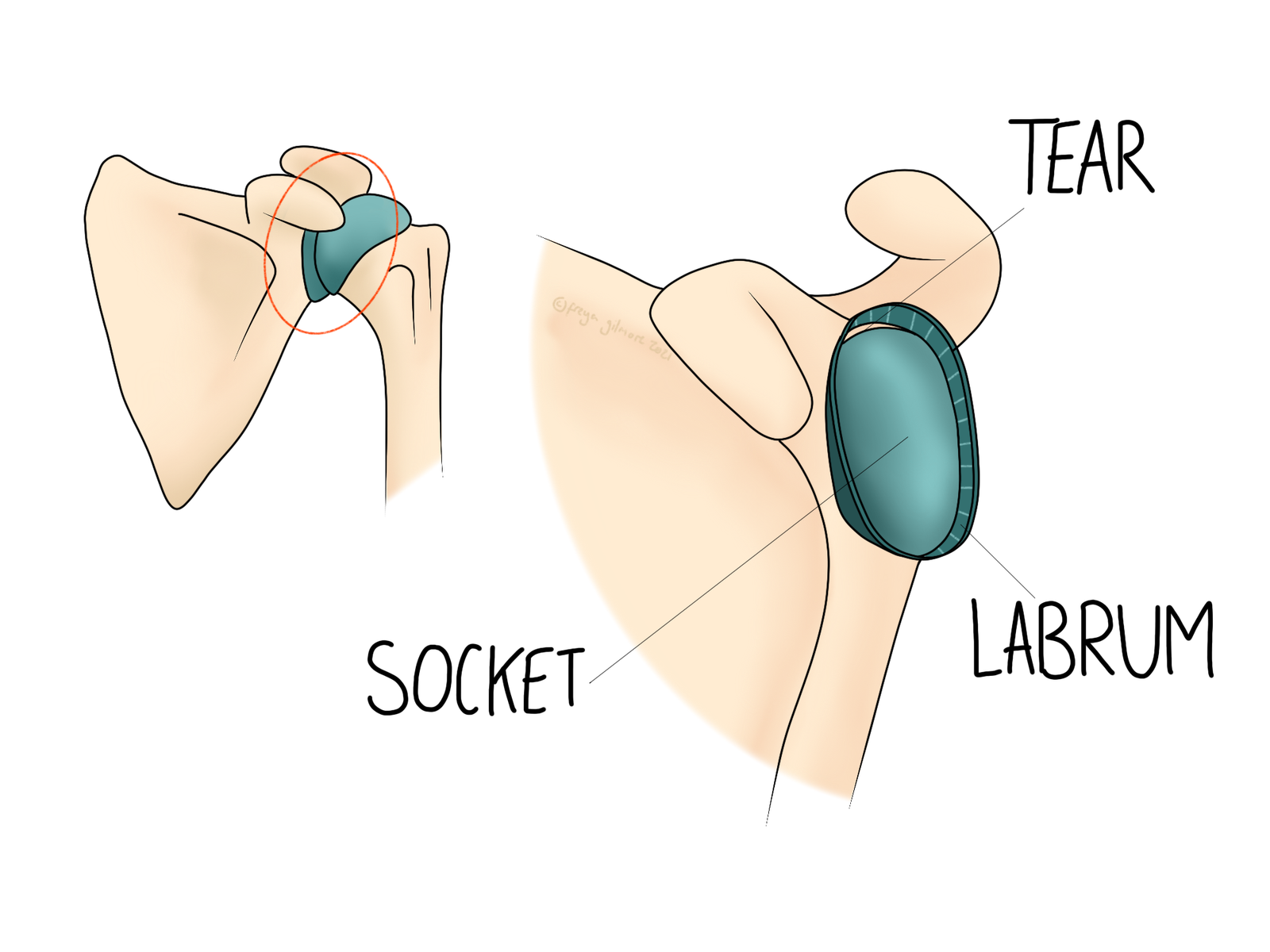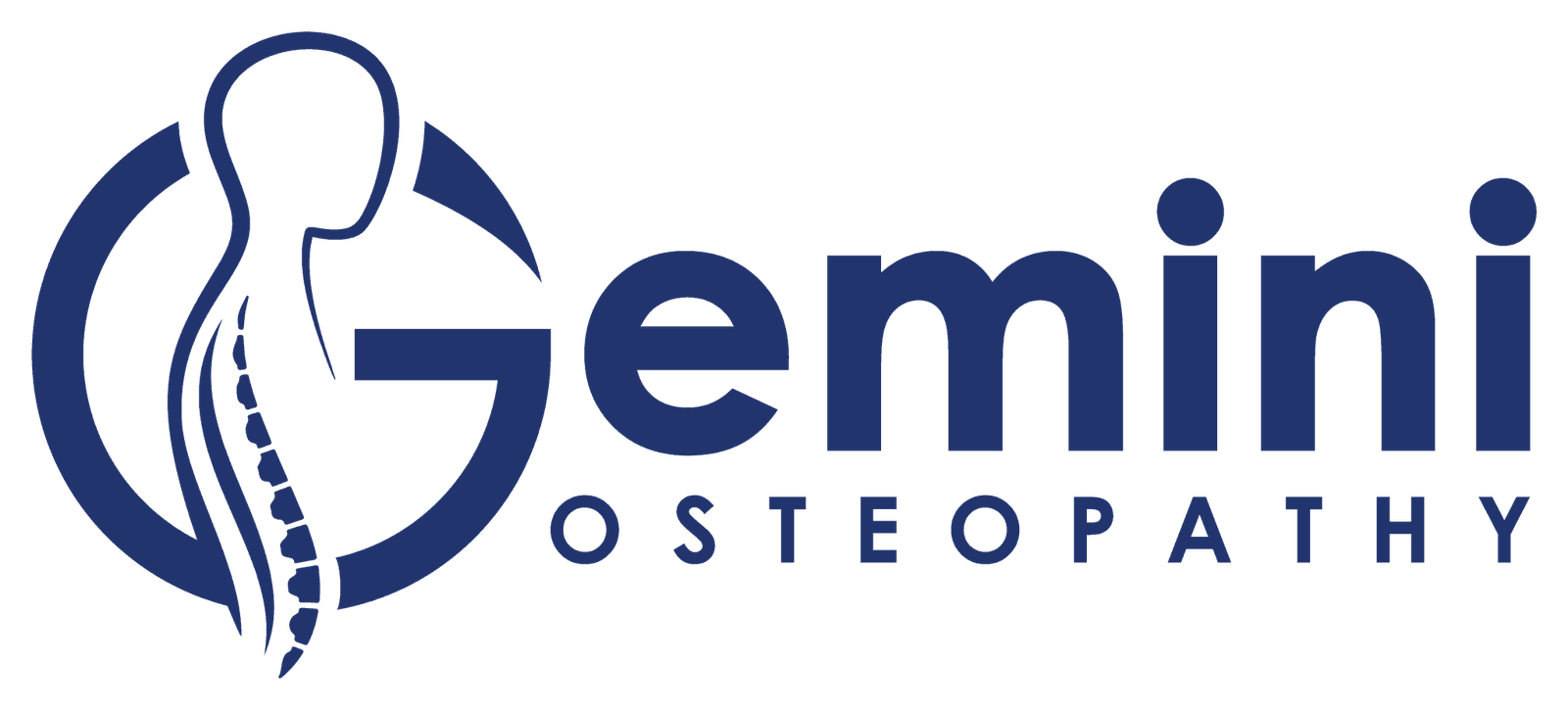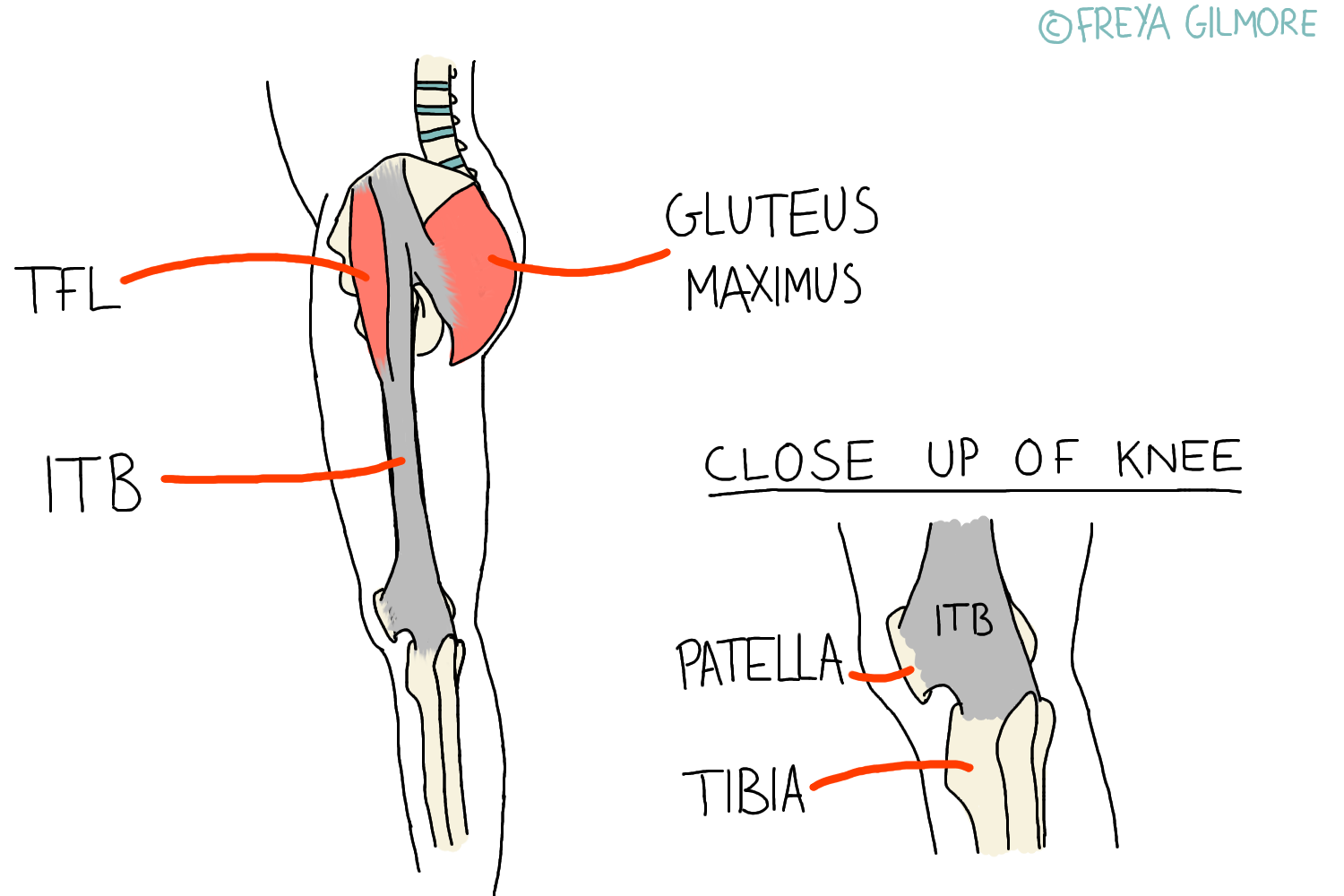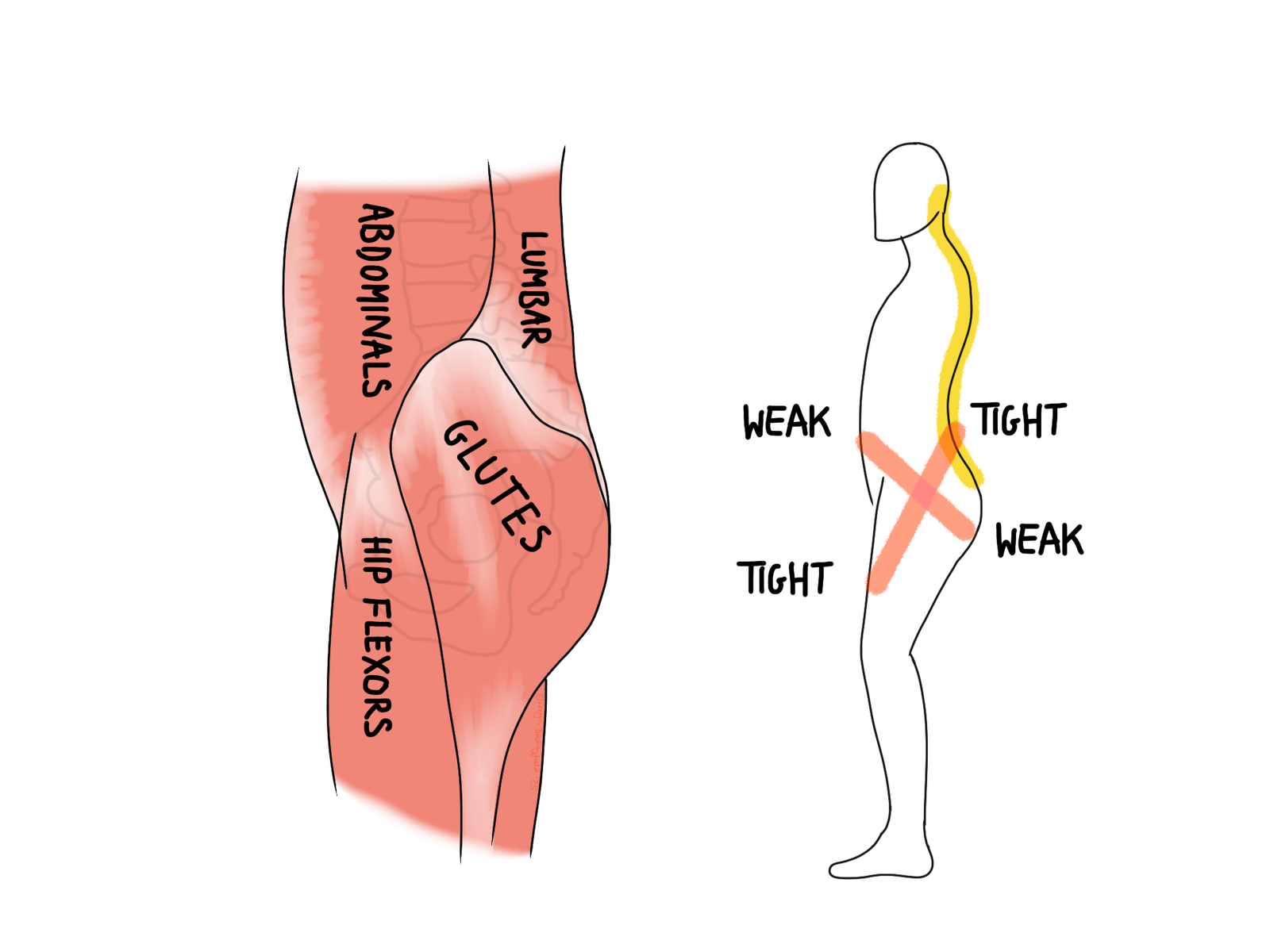The IT band is a band of tissue that runs down the side of the…

Labrum Injuries
“Labrum” simply means “lip”, and in the context of a labrum tear, refers to a lip of cartilage at the edge of a joint. The shoulder and hip (both ball and socket joints) can be affected by a labrum injury.
Anatomy of the Injury
The image above shows how the lip of cartilage extends around the ball of the joint. Its role is to help support and stabilise the joint by essentially making the socket surround more of the ball. This is particularly useful in the shoulder, as the socket is very shallow to allow maximum movement. Cartilage offers more “give” than bone, giving the joint a good balance of stability and mobility. It also helps to absorb impact, reducing demand on the bones of the joint.
The nature of the anatomy puts the labrum under pressure and somewhat vulnerable to injury. Tears may occur where the labrum meets the rest of the cartilage within the socket, as illustrated above.
Causes and Risk Factors
A labrum tear can be caused by sports. Shoulder labrum injuries are often associated with overhead throwing sports. More specifically, throwing is a potential cause of SLAP lesions. This stands for Superior Labrum Anterior Posterior, which just refers to an injury at the top of the shoulder labrum.
Hip injuries can be sports related too, especially in sports that require the thigh to turn outwards or stretch backwards. Often the cause is traumatic, as with a fall or a road traffic accident. Although hip degeneration is a risk factor, the injury is not limited to older people. Hypermobility is recognised as another risk factor.
Osteopathy and Labrum Injuries
As mentioned with other conditions of cartilage, such as osteoarthritis, this is a tissue that heals slowly. Blood supply is poor, so your osteopath’s role is to support the area and encourage the best conditions to allow healing. Just like arthritis, the more you can move the joint, the better the quality of the joint fluid, and the easier for nutrients to enter the cartilage and for waste to leave.
To help with this, we can use a range of techniques, as well as provide you with exercises to do at home. Techniques that relax muscles that are trying to protect the joint can help to improve mobility. Direct joint movement techniques can start to bring the benefits to the fluid and cartilage as mentioned above, making it easier for you to continue the movements at home. As your symptoms improve, we can update your exercises to continue to match your progress.
As with any injury, we will also be alert to other areas that have been affected by compensating for the affected joint. For the shoulder, there might be tension in the muscles leading to the neck, which can in turn cause headaches. In the hip, it might be compensation from the lower back to allow for altered hip movement. All of these things are within our remit, and are worth nipping in the bud.




